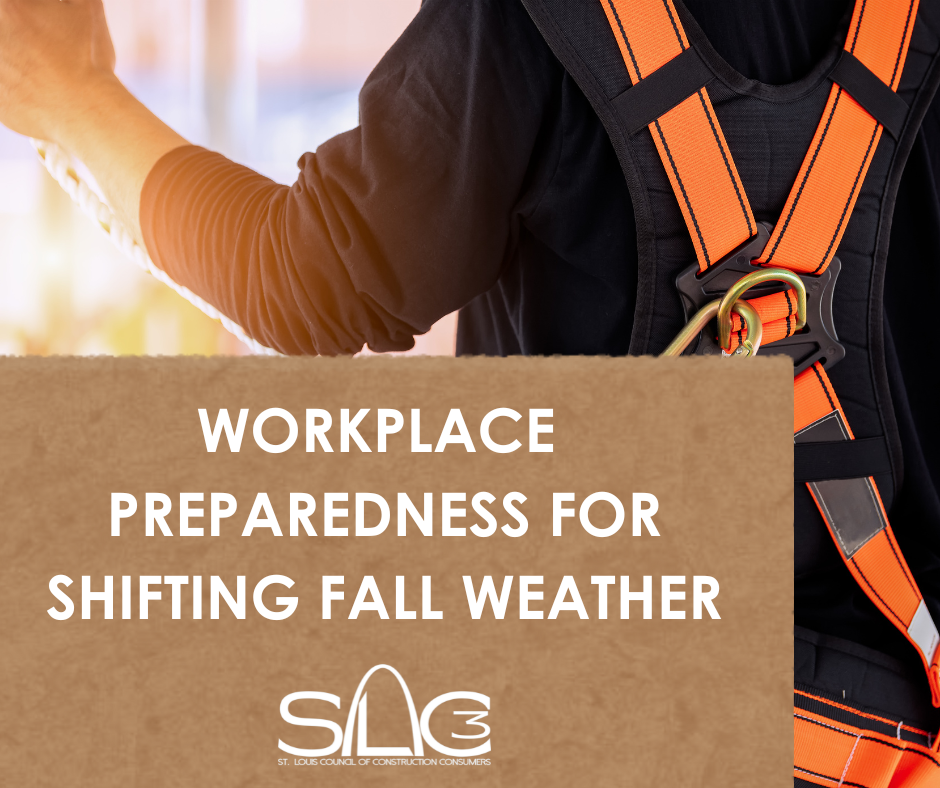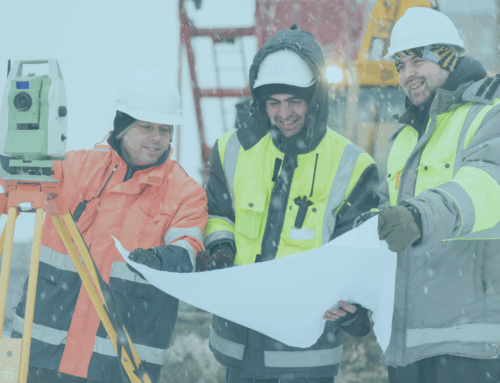As the leaves change and temperatures shift, fall brings a mix of weather that can be unpredictable—from crisp mornings to warm afternoons, and sudden downpours that catch teams off guard. For workplaces, especially in construction, other outdoor industries, this seasonal transition requires careful planning to maintain safety, productivity, and morale.
The Challenges of Fall Weather
Fall weather presents a unique set of hazards. These include:
- Temperature fluctuations: Cooler mornings and warmer afternoons can cause cold stress early in the day and overheating later.
- Rain and slick surfaces: Increased precipitation leads to slippery walkways, tools, and equipment, raising the risk of slips, trips, and falls.
- Reduced daylight: Shorter days affect visibility and can limit safe working hours.
It can be hard to truly consider these hazards when strict deadlines still loom overhead. Fortunately, you can prepare for the season with Operational Preparedness. Workplaces can protect productivity by:
- Scheduling flexibility: Adjust work hours to maximize daylight and accommodate sudden weather changes.
- Equipment readiness: Ensure machinery and vehicles are safe and functional in wet or cold conditions.
- Emergency protocols: Have clear plans for sudden storms, high winds, or temperature extremes.
This creates a culture rooted in preparation. Creating a workplace culture that prioritizes preparedness is key to long-term safety and productivity. Employees should be trained to recognize and respond to fall weather hazards, such as cold stress or slippery surfaces, while feeling empowered to speak up if conditions become unsafe.
Open communication ensures that everyone knows it’s acceptable to pause or adjust work when necessary. Leadership plays a critical role as well—when managers consistently model safe practices and prioritize employee well-being over speed, it sets a standard that reinforces a culture of care and attentiveness across the team.
Safety and Comfort Considerations
Preparedness starts with ensuring that employees are equipped to handle the elements:
- Layered clothing: Lightweight layers allow workers to adjust to changing temperatures throughout the day.
- Waterproof and slip-resistant footwear: Keeps employees safe during wet conditions.
- Hydration: Cooler weather can mask fluid loss, so regular reminders are key.
- Visibility gear: Reflective vests or lighting help maintain safety during early mornings and dim evenings.
More Practical Tips for Teams
Here are actionable ways to stay prepared this season:
- Monitor weather forecasts daily to anticipate changes.
- Provide on-site storage for extra layers, rain gear, and protective equipment.
- Keep salt, sand, or mats ready for slick walkways.
- Rotate tasks to limit exposure to extreme conditions.
- Ensure adequate lighting in work zones as daylight hours decrease.
Fall weather may be unpredictable, but with proactive planning, workplaces don’t have to be. You can minimize risks, maintain productivity, and protect the well-being of your teams. By preparing for temperature swings, rain, and reduced daylight, you create a safer, more resilient work environment that allows employees to perform their best—even as the seasons change.






